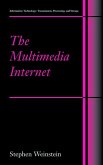21 detailed case studies demonstrate an efficient departure from classical techniques. Unique work creating a new Research and Development topic. Multidisciplinary approach that will benefit researchers and students throughout the fields of artificial intelligence, operations research, optimal control, Internet techniques, communications and traffic control industries. Equipped with an extensive bibliography for easy reference and scope for further study.
Existing practical problems, especially those that are unresponsive to conventional control techniques, are solved with the introduction of this novel approach. A systematic framework of the 'fuzzy control of queuing networks' is developed through each individual case.
Dieser Download kann aus rechtlichen Gründen nur mit Rechnungsadresse in A, B, BG, CY, CZ, D, DK, EW, E, FIN, F, GR, HR, H, IRL, I, LT, L, LR, M, NL, PL, P, R, S, SLO, SK ausgeliefert werden.
Hinweis: Dieser Artikel kann nur an eine deutsche Lieferadresse ausgeliefert werden.









